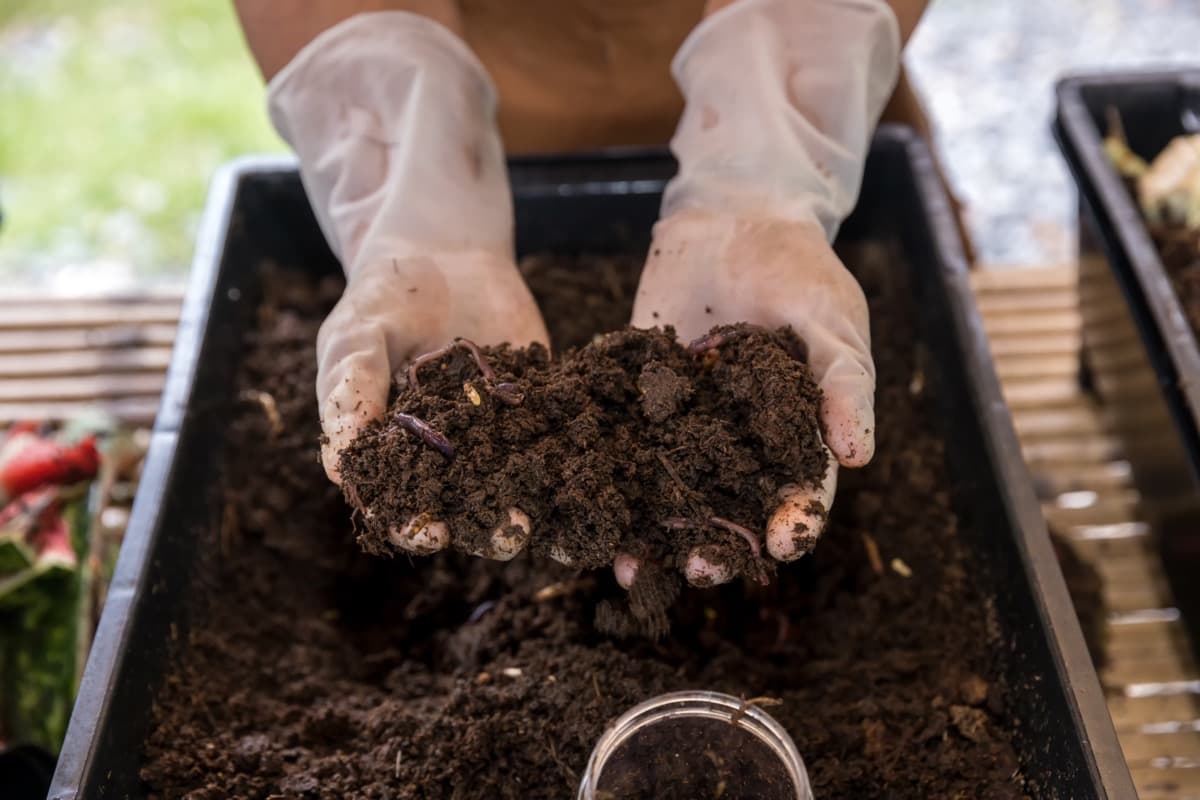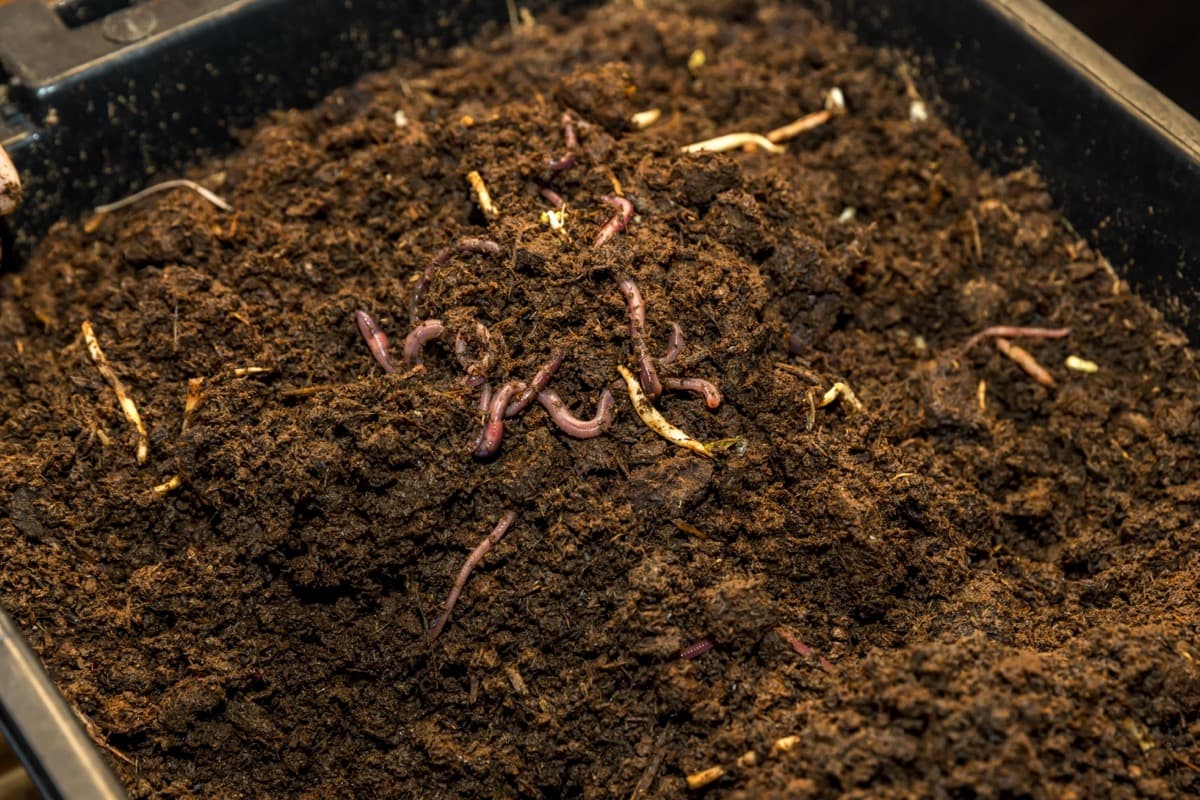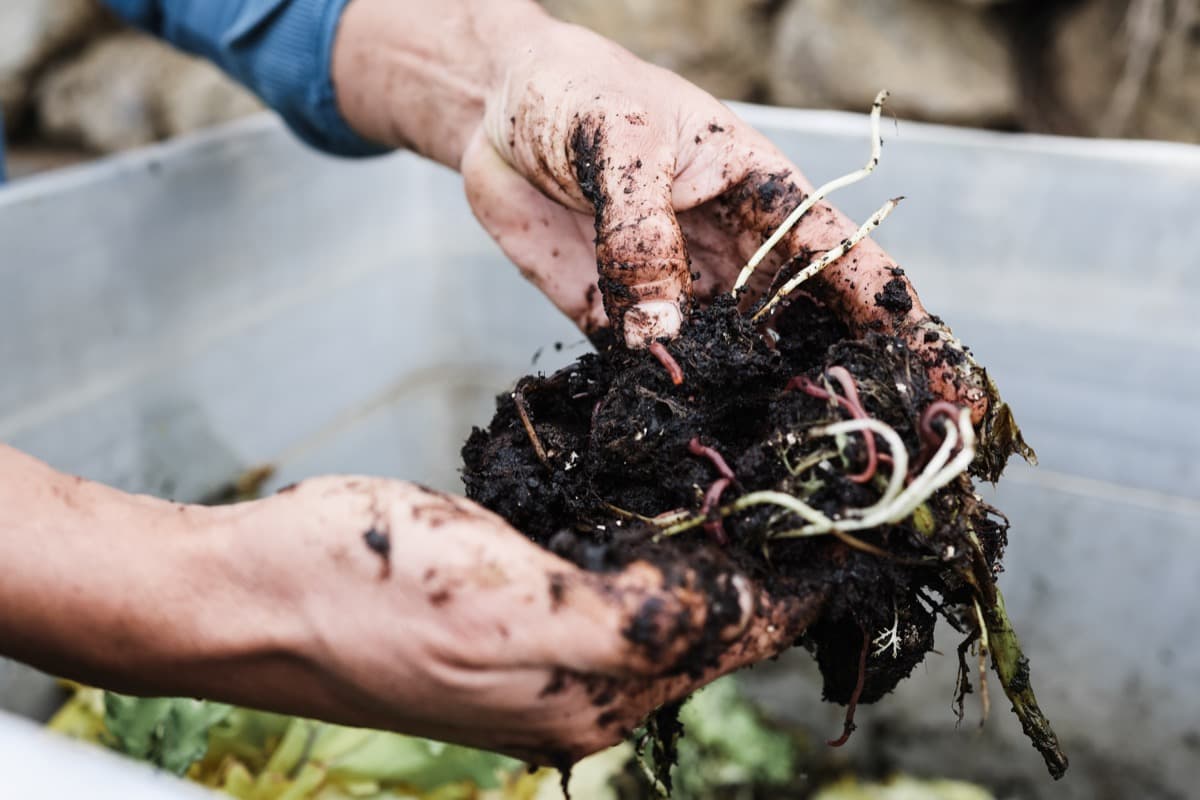Worm farms are types of composting systems called vermicomposts. The worms will eat damp paper, earthworms, and food scraps that you put in a container. As the worms digest the food scraps, they expel a substance known as castings. In worm castings, nutrients are present from food the worms digested, which is good for the soil and the plants. By burrowing through the soil and leaving their castings behind, worms improve the soil’s quality. Gardens and houseplants can benefit from the compost produced by worm farms.

How to Start Worm Farming for Indoor Gardening
Make the Worm Bins
Worm composters are bins with holes for ventilation and moisture. The most common type is plastic, which is raised off the ground so that excess liquid can drain. A lid is usually included with indoor worm bins. You can also make your worm bin if you prefer. When it comes to compost, size matters. Each pound of kitchen waste you add to your worm bin will require one cubic foot of space.
Approximately 20 holes should be drilled into the bottom of one bin, and 10 to 15 holes should be drilled into the lid of the same bin. The other bin can be left as is. A flowerpot or brick should be placed in the undrilled bin, and a drilled bin should be placed on top so that some space is available beneath for drainage.
Prepare the Bedding
Add bedding materials before worms are introduced to their composting bin to simulate a healthy, natural environment. Whether you use shredded brown cardboard or yard waste as bedding, ensure it is not abrasive or sharp and does not restrict airflow. Wet the paper scraps and dried leaves with water and lay them out on the ground. A wet sponge should have a moist, fluffy consistency.
Add the Worm Food to Bins
Several layers of bedding should be layered with worm food. The best way to dispose of kitchen scraps is to mix them. Avoid animal products like meat, bones, dairy, and oily waste. Scraps from fruits, vegetables, citrus peels, and coffee grounds also work well. It is important to feed your worms in a balanced manner.
In case you missed it: Frequently Asked Questions About Vermicompost

The mix should not be too acidic by avoiding too many citrus scraps, coffee grounds, and insufficient other waste. If there are too many other ingredients in the mix, it won’t be acidic enough. Rather than just throwing the food scraps in the bin, bury them beneath layers of bedding to prevent unpleasant odors.
Adding Worms to Your Worm Farm
Experts recommend Red wiggler worms for worm composting. These worms efficiently consume food scraps and other waste. Don’t let Asian Jumping Worms, also known as Alabama Jumper and Georgia Jumper, invade your yard. Worms can be purchased from worm farming supply sites or from someone who makes worm compost. In the bin, worms are reproducing rapidly, causing the population to increase rapidly. You can add worms to the bedding once you have them.
Secure the Perimeter
Even though worms don’t want to leave a dark, wet area with plenty of food, they shouldn’t take any chances. A small extra effort will make them feel more secure and reduce their chances of escaping. It will also help deter fruit flies from joining in with the worms and infesting the bins if you place a few layers of wet newspaper on top of the bedding. To prevent invaders and escape artists from getting into the bin, roll up a few sheets of wet newspaper and tuck them in the corners and sides.
Worm Farm Care
Your worm farm should be kept indoors all year long. Too low or too high temperatures are not conducive to worm growth. It is best to place the worms where they won’t get too hot or cold. Worms can be fed a variety of plant-based food scraps. For feeding worms, vegetables, fruit, tea bags (without the staple), and coffee grounds work well.
The food scraps should be buried in a small hole dug in the top six inches of the soil. Ensure they are completely covered so insects won’t be attracted to them. The worms will only eat more food after eating all the scraps you previously left. You may find that they avoid some scraps. Remove things from the bin that they don’t like, and make a note not to offer them again.
Harvesting Worm Compost
- You must wait at least four months for the compost to be ready for harvesting. You should separate the worms from the compost and leave them behind. This can be accomplished in several ways:
- You should move all the compost to one side of the bin. You can fill the empty side with fresh bedding materials and food scraps. The worms will move to the food-filled area over the next few days. If any worms are left in the compost, you can scoop them out and remove them.
- All compost should be left in place, but food scraps should be placed to one side. After the worms migrate, you can remove the compost they left behind.
- Hand-sort worms from piles of compost by scooping them out. You should replace the worms in the bin as you go.
- When you have harvested the compost, add moist, shredded paper bedding if the worms need it. Since the last meal of the worm has been removed, you should also add food scraps.
The Benefits of Worm Farming For Beginners
Beginner gardeners looking to reduce household waste and generate good compost will find worm farms an attractive option, as they are relatively easy to set up and maintain.
- Compost For Your Garden: Warm farms produce compost that can improve garden soil quality, resulting in healthier plants.
- Reduces Your Carbon Footprint: Recycling helps reduce the carbon footprint and protect the environment by preventing waste from going to landfills.
- Reduces Trash Odor: By worm composting, you can eliminate odors associated with trash unless you throw away meat, cheese, or other non-compostable food.
- Produces Worm Tea: A nitrogen-rich, chemical-free fertilizer for the garden when diluted with water in a ratio of 1:10.
- Environment Friendly: It’s great for the environment to compost. It’s an easy process; you can do it in the backyard.
- Cost-Effective and Low-Maintenance: It is a relatively low-maintenance activity to raise worms. After you set up your worm farm, there are no ongoing costs; you can let them do what they do naturally.
In case you missed it: Organic Gardening Solutions with Worm Castings: Sustainable Idea for Healthy Produce

Conclusion
Growing worms can be a fun and rewarding hobby! However, you should conduct some research before getting started, as there are some important things to remember. Providing your worms with the right food and creating the best environment is also essential.
- Ultimate Guide to Ossabaw Island Hog: Breeding, Raising, Diet, and Care
- Ultimate Guide to Juliana Pig: Raising Facts, Size, Diet, Care, and Lifespan
- Raising Lleyn Sheep: Disadvantages, Price, Uses, Characteristics, and Care
- Ultimate Guide to Meishan Pig: Breed Facts, Breeding, Raising, and Care
- Ultimate Guide to Teacup Pigs: Raising, Diet, Lifespan, Cost, and Care
- Guide to Raising Poll Dorset Sheep: Facts, Profile, Characteristics, Uses, and Care
- Ultimate Guide to Bighorn Sheep: Characteristics, Diet, Lifespan, Breeding, and Lifecycle
- Ultimate Guide to Raising Katahdin Sheep: Farming Facts, Breed Profile, Uses, and Care
- Ultimate Guide to Raising Oreo Cows: Belted Galloways Farming Facts, Profile, Uses, and Care